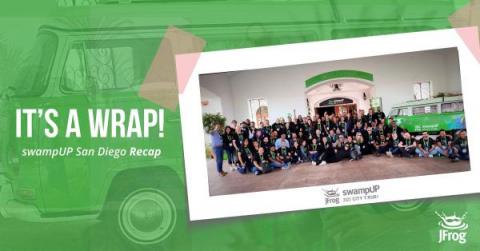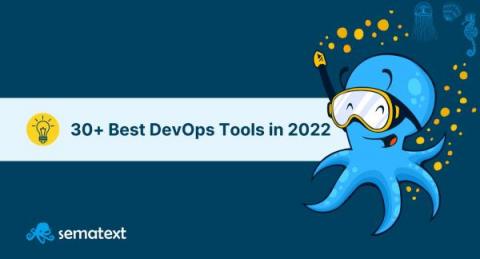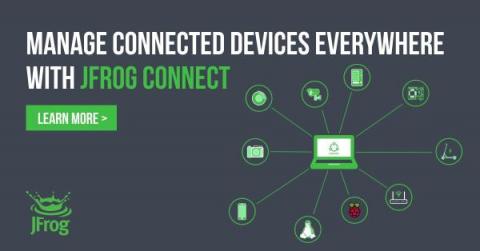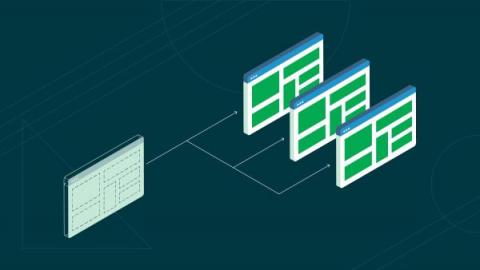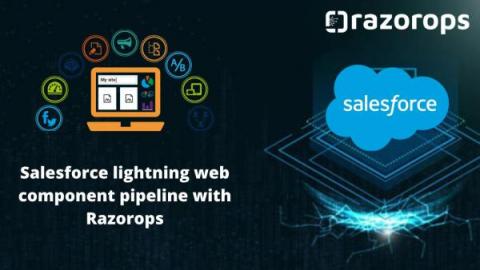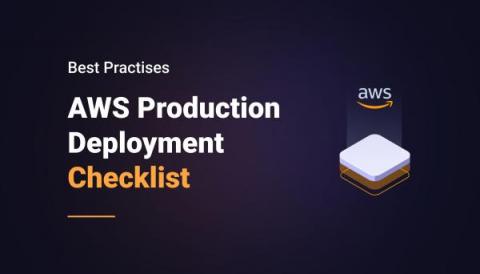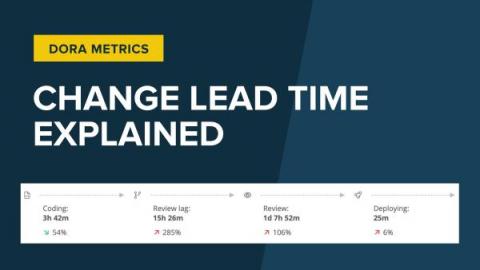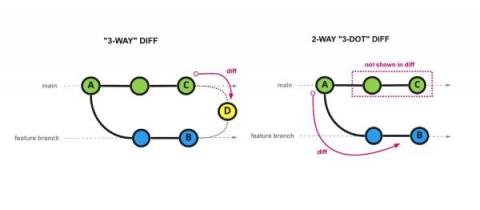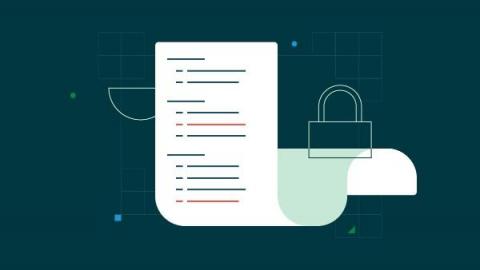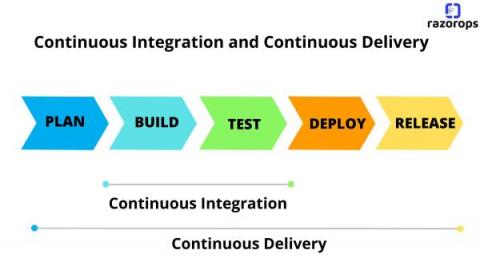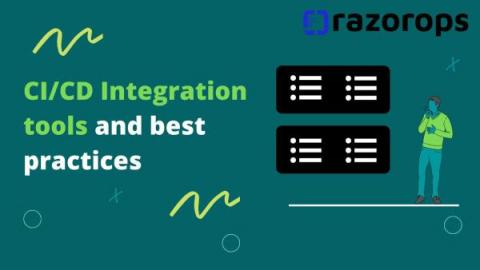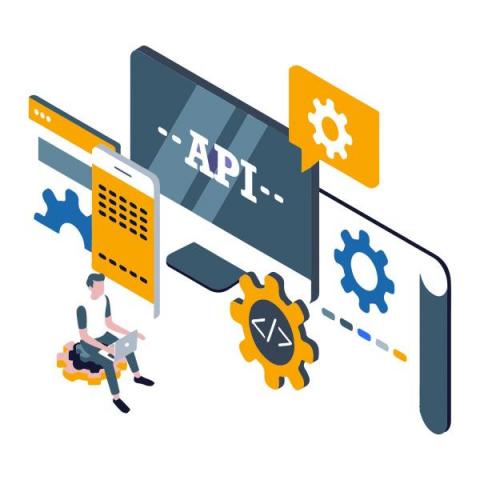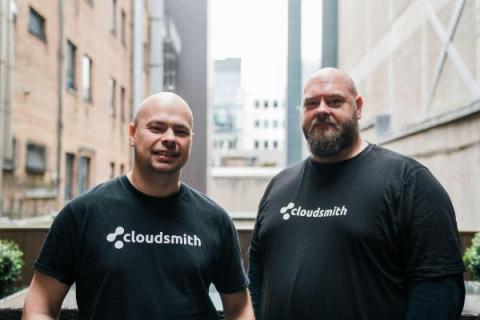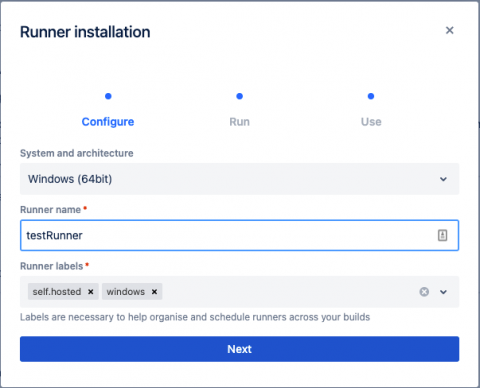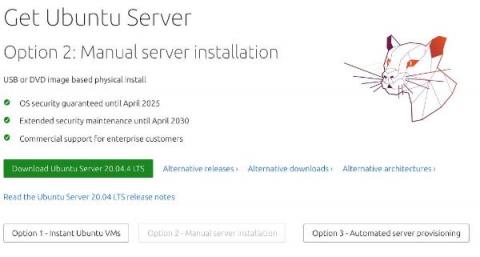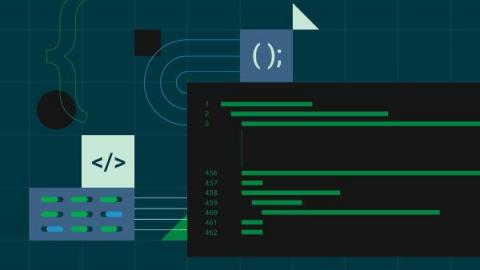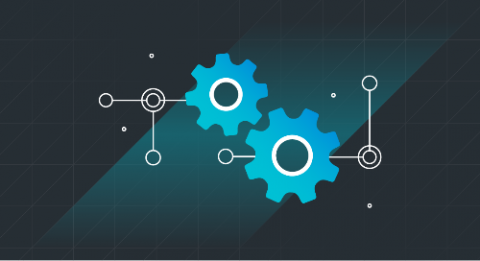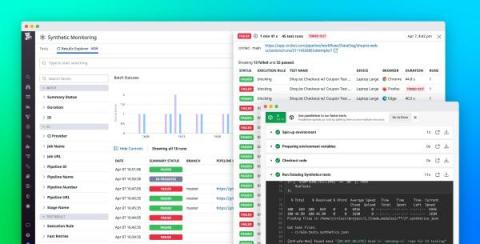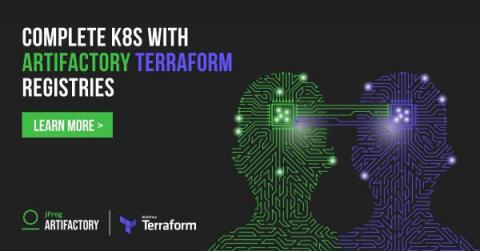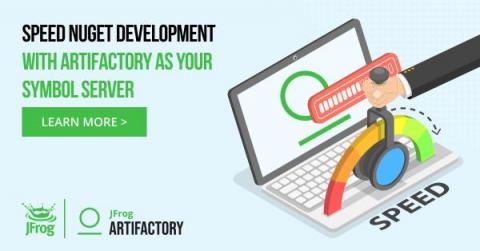Operations | Monitoring | ITSM | DevOps | Cloud
May 2022
Deploying a Laravel application to Heroku
In this tutorial, I will show you how to set up a continuous deployment pipeline to deploy a Laravel application to the Heroku platform with minimum hassle. Automating deployment helps teams limit human intervention during the deployment process, reducing the risk of errors and streamlining the entire software release process.
5 Experiences from JFrog swampUP 2022 San Diego that will Get You Excited for What's Next
CI/CD Pipelines for Kubernetes: Best Practices and Tools
Kubernetes is today’s leading container management platform, due to its comprehensive API and developer-friendly features. Using Kubernetes, you can create scalable and reliable applications that run on-premises systems and public clouds. Its out-of-the-box features allow it to distribute hundreds of instances over data centers and keep them up and running. In order to catch up with the automation level of Kubernetes, developing and deploying applications requires more autonomy.
Testing Flask framework with Pytest
Writing tests in any programming language can be difficult, but it does not have to be. In this tutorial, I will show you how you can easily write and run tests using Flask and Pytest. As a bonus, we will also integrate a CI/CD pipeline to run tests on a Flask app using CircleCI. Be sure to check out our other Flask tutorials to learn about application logging, authentication decorators, and automating Flask deployments.
DevOps for startups
It is an exciting time to be a startup. Our vast technological landscape has made powerful digital tools available to businesses of all sizes, making starting (and scaling) an organization easier than ever before. In an era where technology is a fundamental building block of almost every business, methodologies like DevOps have become ubiquitous across many industries.
Drew McManus on Agile in practice and lessons from Pivotal Labs
Serverless vs containers: Which is best for your application?
To keep ahead of the curve, many organizations are looking at how to evolve their technical processes to accelerate their IT infrastructure development. Fast and robust deployments to the latest platforms are key to achieving the low lead times that enable this evolution. Two of the most widely-used technologies to host these deployments are serverless functions and containers. What are they, how do they differ, and how do you decide which is best for your application?
Developer Week 2021 - Masterclass - Continuous Packaging
Developer Week 2021 - Keynote - Continuous Packaging with Dan McKinney
Top 30+ Best DevOps Tools in 2022: A Comprehensive List of Automation Technologies You May Not Be Using in Your Pipeline
The software is getting more and more complicated and so is the infrastructure behind it. It is no longer what it used to be with a single web or application server and a database backing it up. Throughout the years, the infrastructure has become more and more complicated. We have multiple databases, queues, datastores, search engines, and configurations. We want to incorporate continuous delivery and automated testing and deploy everything easily.
JFrog Connect: Ready for What's Next for DevSecOps, Edge and IoT
The Evolution of Software Trends in 2022
A Joint Meetup: Docker Bangalore & JFrog Bangalore celebrate Docker's 9th Birthday
Docker image versus container: What are the differences?
If you are new to Docker, you may find it challenging to understand all the terms. It can seem like everyone has a different idea of what Docker terms mean, and sometimes, terms get used interchangeably. For instance, you — like others who are learning about Docker — may wonder how a Docker image differs from a Docker container. Their contrasts are subtle but significant.
Salesforce lightning web component pipeline with Razorops
The Lightning Component framework is a UI framework for developing single page applications for mobile and desktop devices.
Continuous integration for React applications using Jest and Enzyme
React continues to be the web framework of choice for many UI developers, surpassing jQuery as the most popular framweork in the 2021 Stack Overflow Developer Survey. It provides an intuitive model for building data-driven user interfaces, and efficiently updates the DOM when this data changes. React pairs nicely with Redux for managing the data that React needs to render interfaces. Redux offers a predictable way to structure and update the data in those frontend applications.
AWS Production Deployment Checklist
Automate testing for Golang Gin-gonic RESTful APIs
Gin is a high-performance HTTP web framework written in Golang. It contains features and functionalities like routing and middleware out of the box. This helps to reduce boilerplate code, improves productivity, and simplifies the process of building microservices. In this tutorial, I will guide you through the process of building a RESTful API with Golang using the Gin-gonic framework. I will also lead you through building an API to manage the basic details of a company.
Change Lead Time Explained
This post is the second in a series of deeper dive articles on the four DORA metrics. The first metric we looked at was Deployment Frequency, which is about how often code can get released to end users. In this second article, we’ll look at Change Lead Time, arguably the metric most familiar to developers.
Improving performance on complex diffs
Software bill of materials: What it is and why you need one
Most organizations that make software — from small startups to multi-billion-dollar behemoths — use third-party libraries and tools to develop their applications. Modern apps depend on many external components to build and deliver software to customers. These libraries and tools are collectively called the software supply chain. A software supply chain for a typical web app may include components like these.
Making HTTP requests with Axios
Axios is a promise-based HTTP library that lets developers make requests to either their own or a third-party server to fetch data. It offers different ways of making requests such as GET, POST, PUT/PATCH, and DELETE. In this tutorial, I will explain how Axios interacts with applications, describe the structure of Axios requests and responses, how to make requests to an API, and how to write tests for your requests using CircleCI.
From class components to React Hooks
Starting with version 16.8, React provides a way to use component and global state without the need for class components. This does not mean that Hooks are a replacement for class components, though. There are some benefits of using class components, which I will describe later in this tutorial.
What is Continuous Integration and Continuous Delivery?
Continuous integration is a DevOps practice, where developers continuously integrate the code changes into a central repository. It most often refers to the build or the integration stage of the software release process. A continuous integration service helps to automatically build and run unit tests on the new code changes to find any errors instantly.
What is Continuous Integration (CI) - Best Practices, Benefits of CI, Tools
Continuous integration (CI) is a development practice where development teams can make small, frequent changes to code. With an automated build which verified the code each time developers verify their changes into the version control repository. Which helps the development teams to detect any defect in an early stage. Continuous integration is the first part of CI/CD, which enables the development team to release the code changes gradually to production quickly and regularly.
Continuous Performance Testing in CI Pipelines: CircleCI
With over 50,000 active organizations and 250 million workflows, CircleCI is one of the most popular networked CI platforms. When getting started with CI pipelines, teams typically want to ensure that code will compile, pass unit tests, and build a container image. After catching these low hanging fruit of syntax errors, engineering teams need to dig much further to find business logic and scalability errors.
Pricing: A Message from the Founders of Cloudsmith
Alan and Lee talk about the journey of Cloudsmith, and how we got to where we're at today with the latest pricing announcement.
Pricing: Building A Better Cloudsmith
We dive into the details of why we're changing the pricing at Cloudsmith, what it means for you, and how we can help.
Application logging with Flask
Without logs, or a good understanding of them, debugging an application or looking through an error stack trace can be challenging. Luckily, Flask logging can change the way you understand debugging and how you interact with logs produced by the application. The Flask logging module gives you a way to record errors over different severity levels. A default logging module is included in the Python standard library, and it provides both simple and advanced logging functions.
Announcing support for Windows runners in Bitbucket Pipelines
Codefresh Upends Continuous Delivery with Hosted GitOps Platform featuring DORA dashboards and first-class integrations for CI.
Today we’re excited to make three major announcements. First, we’re making it easier to adopt the very popular Codefresh GitOps CD with a fully SaaS offering that is hosted and managed by Codefresh. We’ve heard from many in the community that they’d like to get away from managing Argo CD and focus just on deploying and managing their applications. Hosted GitOps CD makes it easier than ever to adopt GitOps, just create an account, connect your target clusters, and deploy.
What is Conda?
Curious about the Conda universe? Learn what Conda is & where it came from, what Conda packages are, which Conda communities to join, & more!
Deploying K3s with Ansible
There are many different ways to run a Kubernetes cluster, from setting everything up manually to using a lightweight distribution like K3s. K3s is a Kubernetes distribution built for IoT and edge computing and is excellent for running on low-powered devices like Raspberry Pis. However, you aren’t limited to running it on low-powered hardware; it can be used for anything from a Homelab up to a Production cluster.
How to write optimized & secure docker file to create docker images
Incident response: leadership & psychological safety with Jeli founder Nora Jones
Continuous Deployment vs. Delivery | Differences Explained
Code quality metrics: How to evaluate and improve your code
High-quality code is efficient and reliable, runs well without bugs, and meets user needs. It can cope with errors or unusual conditions. It is also easy to understand, maintain, and expand with new features. Additionally, its portability means that it can run on as many machines as reasonably possible. Development teams work with codebases that are constantly changing. They add, delete, and modify existing code to improve speed or implement new features.
Beyond CI/CD: The Software Supply Chain Is the Enterprise Path to Production
For those managing enterprise software development organizations, the concept of software supply chains—that is, the set of sources and actions that take software from “raw materials” to a finished product—might represent an abstract concept. While this definition is essentially correct, it doesn’t do enough to explain how supply chains can be complementary to your existing continuous integration and continuous deployment (CI/CD) environments.
Creating snapshots in Jest for testing React applications
Automated tests are especially important in large applications that have lots of moving parts. It is smart to learn about many methods of testing applications so that you can provide as much coverage as possible. If you are not familiar with using snapshots in testing, read on. Snapshot tests are written as part of frontend test automation.
Efforts to Secure OSS fired up after Log4Shell
Who would have thought software could rattle the White House? But a vulnerability in Log4J, a popular open source software project, exposed critical digital infrastructure to remote code execution attacks. This prompted the US Government to engage big tech, infosec professionals, and open source organizations to come together to help secure open source software.
DevOps Horror Stories: Repository of Horror
Just when you thought it was safe to go back in the water... Is there anything more frightening than the unknown? Anything the mind can conjure up is frequently scarier than something realized. The shark in Jaws is terrifying because you don’t see it until it’s too late. It’s a silent, relentless death machine, hiding in the water. A software vulnerability is the unknown, hidden deep within an ocean of code, packages and container dependencies.
Are metrics vendors lying? Reaction to Gergerly Orosz's tweet
Standardizing your GitOps Definition - Ravi Lachhman, Shipa (Meetup for Argo)
Cloud-Hosted or Cloud-Native? Discover Why Cloudsmith Was Born in the Cloud
Today, almost every service now is offered in a “Cloud” variant. But what does that really mean? Are all clouds services equal? It’s easy to see why so many vendors rush to add a Cloud edition/variant of established software they sell. Undoubtedly, there has been a move to Cloud services across the industry, as more and more organizations seek to take advantage of the higher reliability and lower total cost of ownership that Cloud platforms promise.
Run Synthetic tests in your CI/CD pipelines with the Datadog CircleCI orb
CircleCI is a CI/CD service that allows organizations to rapidly build, test, and deploy within their pipelines on a single platform. If you are using CircleCI for your CI/CD pipelines, you can now leverage the Datadog Synthetics CircleCI orb to implement Synthetic tests as part of shift-left testing. CI/CD testing is a widely adopted DevOps standard that helps teams mitigate any potential issues that could arise as a result of faulty code deployments.
How to Set up a Jenkins CI/CD Pipeline for Your Golang App
Bringing the best software solutions to market as quickly as possible requires using automation to facilitate repetitive tasks (e.g., testing) so you can spend more time writing high-quality code. This is one of the main reasons why today’s top-performing dev teams build continuous integration (CI) and continuous delivery or continuous deployment (CD) pipelines, which enable them to ship new releases faster.
Complete Your Cloud Kubernetes Registry With Terraform Repositories in Artifactory
Sleuth raised $22M Series A to help teams track and improve engineering efficiency
We are excited to announce that Sleuth has raised $22M in Series A funding, led by Felicis, joined by Menlo Ventures with participation from CRV. We’re disrupting the world of engineering efficiency and we're hiring, come join us!




